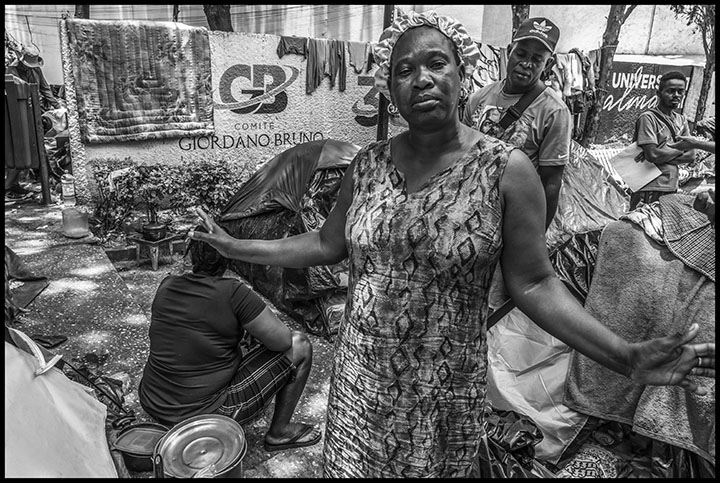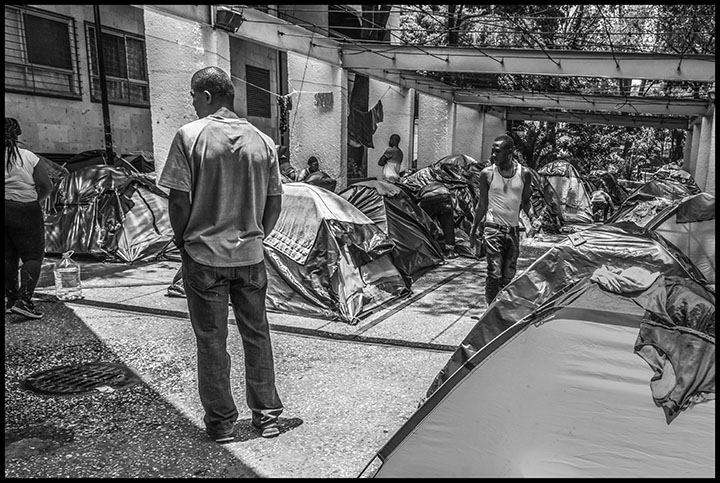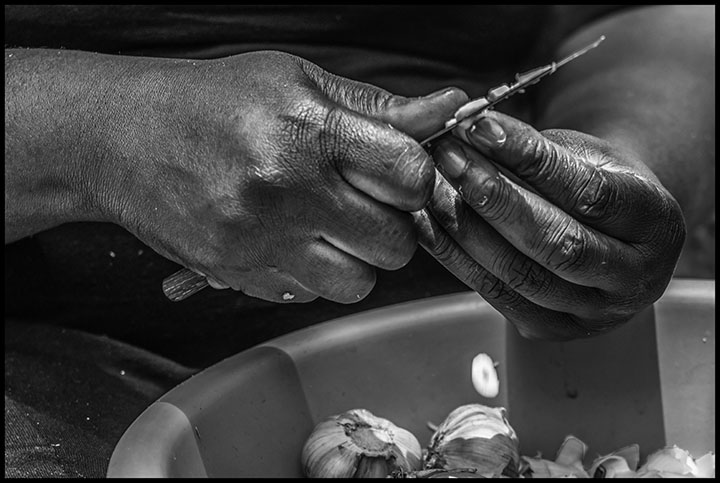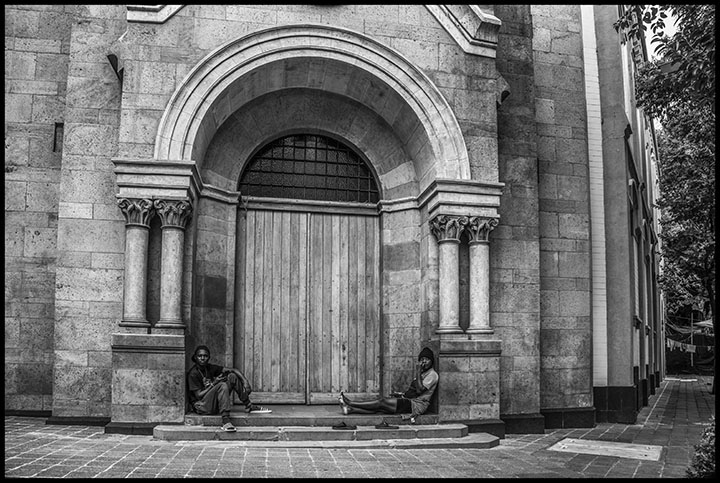by David Bacon
On the Line – The Progressive – August 24, 2023
https://progressive.org/magazine/waiting-for-refuge-in-mexico-city-bacon-20230824/

A Haitian refugee shows her frustration at not being able to reach her destination.
With all the attention on the detention centers on the border, U.S. media rarely if ever acknowledges that camps of migrants and displaced people exist all over Mexico. In documenting the impact of U.S. border policy on Mexico, I took these photographs in a settlement of Haitian migrants, who had been living for a month in Giordano Bruno Plaza in Colonia Juarez, in downtown Mexico City.
Over a hundred families were heading for the border after a long journey from Haiti when they realized that they would not be able to cross, or that if they tried and were unsuccessful in getting asylum (since hardly any Haitians do) they would be deported back to Haiti. In May alone over 4000 Haitians were put on the deportation planes by the U.S. government.
The Mexican government and the government of the city provide some minimal services to the Haitians, who were debating whether they should stay in Mexico. There is a process, albeit cumbersome, in which they can apply for permission to stay and work.
Next to the Haitian encampment is a planton, or occupy-style protest camp, set up by Otomi indigenous people and the association “United for Farmer and Indigenous Rights.” Some years before they had occupied an abandoned building and then were expelled. Refusing to leave they began living on the sidewalk outside, demanding decent housing and protesting gentrification. Their long-established camp provided the Haitians a place to wash.
The neighborhood authorities who maintain the plaza have painted on a wall behind the migrant tents, “Amor es el vinculo de vinculos” or “Love is the bond of all bonds.” It is an ironic statement, given the world’s (and especially the US’) hostility to migrants, but it is also a statement that the people of this neighborhood have given them the use of their neighborhood park as a place to rest.
The statement itself comes from Giordano Bruno, a revolutionary monk of the early Renaissance, burned at the stake in Rome’s Piazza de Fiori in 1600 for asserting that the earth was not the center of the universe. He is considered a hero of scientific and free thought. Bruno spent most of his life as a migrant and refugee, much like the Haitians, fleeing the Inquisition, before he was finally captured. Bruno’s statement of his mystical vision refers to the chapter in the Bible, Colossians 3:14: “And above all these things, clothe yourselves with love, which is the bond of unity.”
Returning a few weeks later, I found most of the Haitians had left. According to Josias Termot, they’d gone to the border, and some had been able to cross. Others were now living in the Casa del Migrante, a refugee shelter managed by the Cuauhtemoc local government a few blocks away. Many were without work, however, and during the day returned to the plaza to hang out with a new group of migrants from Venezuela, who’d just arrived.

Gina washes clothes in a bucket.

Berlande cooks for her family.

Neika is just trying to live as normal a life as she can on the road.

Fabienne cooks for her family.

Families in the camp’s tents cook their food for lunch.

“Amor es el vinculo de los vinculos”

Josias Termot is a leader of the camp community.

Katia cooks for her family.

Katia cooks for her family.

Peeling garlic.

Sleeping on the sidewalk.

Next to the camp of the Haitians is a protest planton of Otomi indigenous people, who offer washing and other services to the Haitians.

Two Haitian men ask to use the bathroom in the planton of Otomi.

Daniel Alejandro Medina says he is from Westminster and wants to go back.

Michelle Medina nurses her baby Salome Comenal, and Milagros Tovar holds a Venezuelan flag, while a group of Haitian men look on.

The doorway of a church provides refuge.
Permission given by David Bacon
Leave a Reply